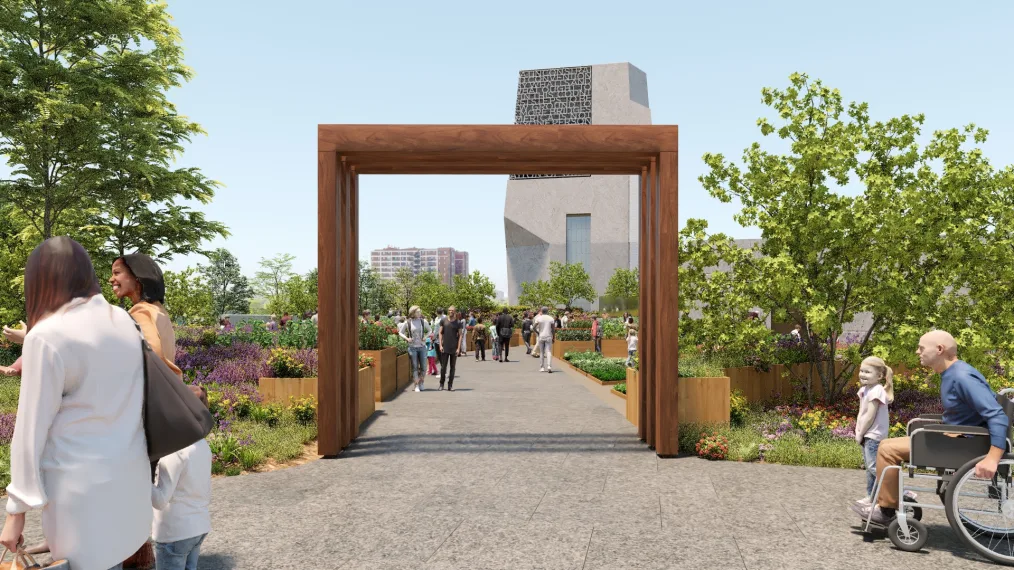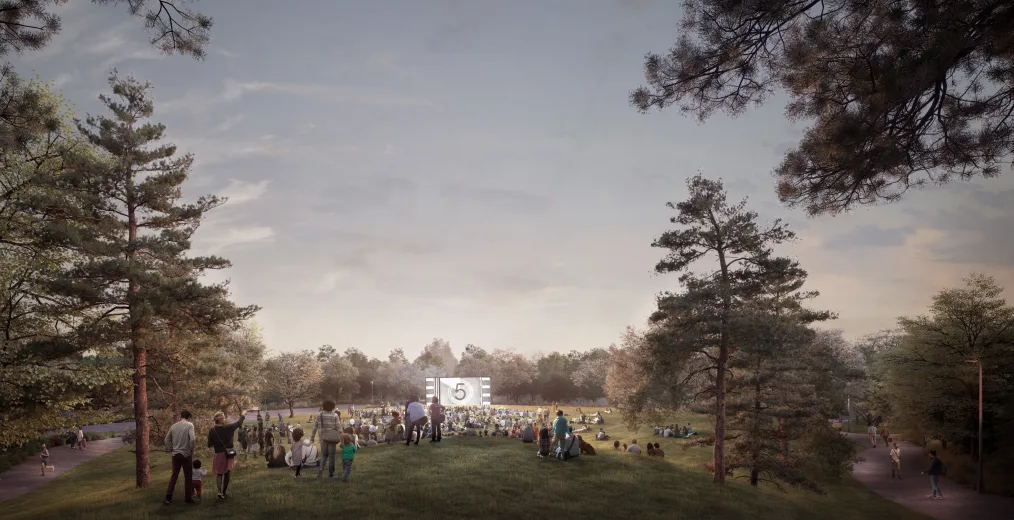The Obama Presidential Center’s commitment to environmental sustainability

The Obama Foundation continues to build on President Obama and Mrs. Obama’s commitment to environmental sustainability through the creation of the Obama Presidential Center. The Center, a vibrant 19-acre campus nestled within Chicago’s historic Jackson Park, will be a model of sustainable development that through a combination of innovation and ingenuity pushes the boundaries of what’s possible. The campus landscape will brim with new life, creating a breeding ground for civic participation that will protect our global future.
Design
The Obama Presidential Center will source 100 percent of its electricity from renewable energy. All buildings and facilities will be LEED v4 Platinum (Opens in a new tab), SITES Silver (Opens in a new tab), and International WELL Building Institute Health-Safety Rating certified. No fossil fuels will be used in day-to-day operations and solar panels will be installed on the roof of the Garden Pavilion and the Home Court at the Obama Presidential Center, helping the Center operate as a carbon neutral institution.
Indoor areas at the Presidential Center will provide a healthy environment for employees and visitors. This includes entryway systems and high-efficiency filters that capture airborne contaminants, and provisions for thermal comfort, individual lighting control, and noise reduction.
Finally, the campus will have a comprehensive water conservation system. By capturing and reusing a significant amount of rain that falls onsite it will save over 1 million gallons of potable water use each year.

Learning
While exploring the Obama Presidential Center, visitors will have the opportunity to learn about the Obama Administration’s work to combat climate change, from the Paris Agreement to protecting more acres of public land and water than any other administration in history.
Guests can also draw inspiration from stories about changemakers currently leading in environmental justice, conservation, and climate change—then leave with the tools and resources they need to take action in their own communities. These initiatives will be presented throughout the campus in immersive media exhibits, art work, and year-round programming.

Green Spaces

The Eleanor Roosevelt Fruit & Vegetable Garden
The Eleanor Roosevelt Fruit & Vegetable Garden is a vibrant space that builds on Mrs. Obama’s work focused on the food we eat and healthier lifestyles for families. With its open and accessible design, the Garden will be a space where visitors can learn about composting, gain insight in local food production, discover responsible consumption practices, and connect to the food they eat every day. The Garden will be a sunlit location atop of the Obama Presidential Center’s Chicago Public Library branch.

The Playground
Situated next to Home Court at the Obama Presidential Center, the Playground will be an imaginative space that encourages joy and creativity for children of all ages. The design of the playground celebrates the natural environment of Jackson Park, with lagoon and woodland-themed features to stir imaginations and encourage exploration. It will offer four seasons of play with additional seating and shade for adults.

The Great Lawn
The Great Lawn is a signature element of the Obama Presidential Center’s outdoor landscape that strengthens our community through joyful exchange and leisure. The large outdoor area will be available to visitors year-round as a place for sledding in the winter, picnics in the summers, and programming hosted by the Obama Presidential Center for the broader Chicago community.

Ann Dunham Water Garden
The introspective and intimate Ann Dunham Water Garden will honor the life and legacy of President Obama’s mother. The Water Garden will include a stone sculptural water feature created by world renowned artist and architect, Maya Lin–best known for designing the Vietnam Veterans Memorial in Washington, D.C.

Wetland Walk
In an effort to support water conservation, the Obama Presidential Center will feature a Wetland Walk, which will capture stormwater that will be treated and reused to irrigate the landscape. The Wetland Walk will contain walking paths that thread through the area, a tree canopy, and a place for children to play. Seating will be built out of large stone blocks that can be used for classes, small gatherings, or simply as a spot to stop and enjoy the park.
Our Partners
Chicago Botanic Garden
Led by Michael Van Valkenburgh Associates (Opens in a new tab), the Center’s landscape design has also been developed with the Chicago Botanic Garden (Opens in a new tab). Bringing their expertise in horticulture, science, and education to the project, the Chicago institution has played a key advisory role and has made recommendations on species that are native to and appropriate for the Chicago climate, improvements to accessibility, and other details.